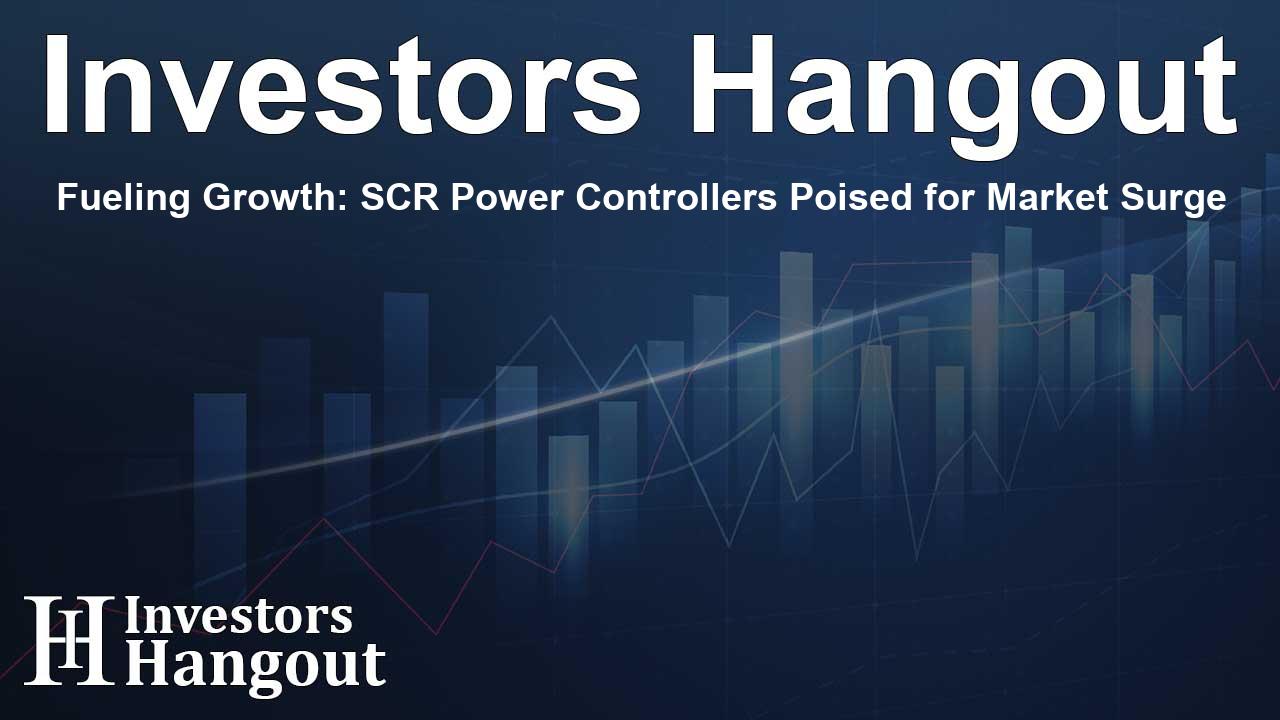Fueling Growth: SCR Power Controllers Poised for Market Surge

Understanding the SCR Power Controller Market Dynamics
The SCR Power Controller market is experiencing significant transformation as the demand for industrial automation continues to rise. Currently valued at USD 171.13 million, analysts forecast it to reach USD 246.11 million by 2032, with a compound annual growth rate (CAGR) of 4.56% during the forecast period from 2025 to 2032. This remarkable growth reflects the increasing emphasis on energy efficiency and automation across various sectors.
Why Energy Efficiency and Automation Matter
Energy-efficient processes are becoming increasingly critical in industries ranging from metals to chemicals. The SCR, or Silicon-Controlled Rectifier, power controllers play an essential role in regulating thermal and motor loads accurately. As environmental regulations tighten, companies are motivated to adopt solutions that contribute to reduced carbon emissions and enhance operational efficiency. The integration of SCR power controllers into advanced digitalized control systems reflects this ongoing shift towards smarter, greener technologies.
Key Segments of the SCR Power Controller Market
The growth of the SCR Power Controller market can be dissected into several key segments. For instance, the market is categorized by type, with single-phase SCR power controllers leading the charge, accounting for over 60% of the revenue share in 2024. This popularity is attributed to their cost efficiency, compact design, and versatility in numerous low to medium power industrial applications.
Three-Phase SCR Power Controllers
Meanwhile, three-phase SCR power controllers are projected to exhibit the fastest growth, with a CAGR of 5.65% from 2025 to 2032. Their application in high-power industrial settings such as metal processing and large manufacturing operations underscores their importance in the market landscape.
Control Types Enhancing Market Dynamics
Control types are another pivotal aspect determining market dynamics. The phase angle control segment is anticipated to hold a significant revenue share due to its precision in controlling power delivery. Applications requiring strict control over temperature and resistive heating loads benefit immensely from this technology.
Zero-Crossing Control Growth Trend
On the other hand, zero-crossing control is expected to grow at a remarkable CAGR of 5.47%, driven by its ability to minimize electrical noise and harmonics, making it suitable for resistive heating applications with a lower interference profile.
End-Use Industry Influence
Among the end-use industries, the chemicals and petrochemicals sector emerged as the dominant player in the SCR Power Controller market, accounting for 36.22% of the total market share. The precise thermal control required in these industries positions SCR power controllers as vital components in their operations.
Regional Market Insights
Geographically, North America plays a pivotal role in the SCR Power Controller market, holding a substantial 31.31% share in 2024. The U.S., with its robust industrial base and stringent energy consumption regulations, leads the way. However, Asia Pacific is projected to be the fastest-growing region, achieving a CAGR of 5.64% as industrialization accelerates in countries like China and India.
The rapid expansion of sectors requiring scalable and energy-efficient SCR controllers is fostering smart infrastructure across developing economies in this region, prompting greater investments in modern technologies.
Emerging Developments and Trends
Recent developments in the SCR Power Controller market underscore the drive towards energy efficiency and innovative solutions. For instance, the recent unveiling of EcoStruxure Electrodynamic Controllers is geared towards low to medium-voltage applications, marking a significant step in enhancing energy-efficient thermal control in SCR applications.
Moreover, acquisitions such as ABB’s intended purchase of Gamesa Electric’s power electronics business are strategically aimed at bolstering renewable power capabilities, which could positively impact SCR technology proliferation.
Frequently Asked Questions
1. What is the expected growth rate of the SCR Power Controller market?
The SCR Power Controller market is expected to grow at a CAGR of 4.56% from 2025 to 2032.
2. Which sector is the largest user of SCR Power Controllers?
The chemicals and petrochemicals sector is the largest user, accounting for 36.22% of the market.
3. How do single-phase and three-phase SCR controllers differ?
Single-phase SCR controllers are more cost-effective and compact, whereas three-phase controllers support high power applications and are expected to grow more quickly.
4. What regions are driving growth in the SCR Power Controller market?
North America and Asia Pacific are significant players, with Asia Pacific seen as the fastest-growing region.
5. What recent developments are impacting the market?
Innovations like the EcoStruxure Electrodynamic Controllers and acquisitions in the power electronics sector are contributing to advancements in SCR technologies.
About The Author
Contact Caleb Price privately here. Or send an email with ATTN: Caleb Price as the subject to contact@investorshangout.com.
About Investors Hangout
Investors Hangout is a leading online stock forum for financial discussion and learning, offering a wide range of free tools and resources. It draws in traders of all levels, who exchange market knowledge, investigate trading tactics, and keep an eye on industry developments in real time. Featuring financial articles, stock message boards, quotes, charts, company profiles, and live news updates. Through cooperative learning and a wealth of informational resources, it helps users from novices creating their first portfolios to experts honing their techniques. Join Investors Hangout today: https://investorshangout.com/
The content of this article is based on factual, publicly available information and does not represent legal, financial, or investment advice. Investors Hangout does not offer financial advice, and the author is not a licensed financial advisor. Consult a qualified advisor before making any financial or investment decisions based on this article. This article should not be considered advice to purchase, sell, or hold any securities or other investments. If any of the material provided here is inaccurate, please contact us for corrections.
